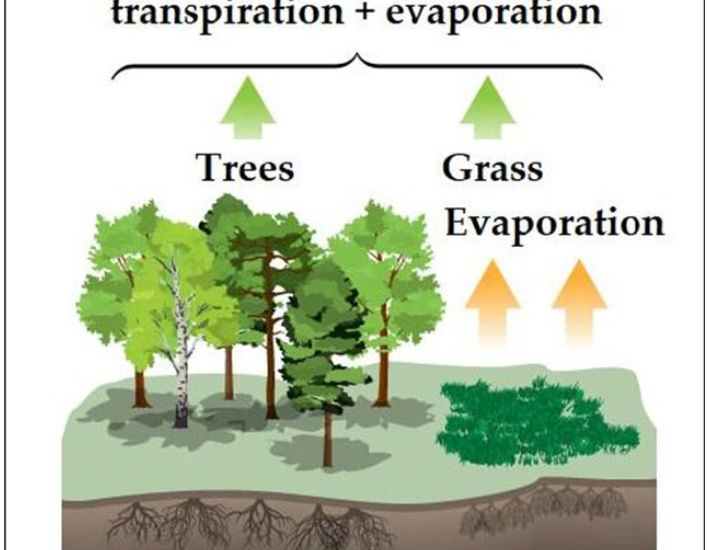Water is one of Earth’s most precious resources, essential for all forms of life. It circulates through various phases in a continuous cycle, known as the hydrological cycle or water cycle. Evapotranspiration is a critical component of this cycle, playing a vital role in maintaining the balance of Earth’s water resources. In this blog post, we will delve into the fascinating world of evapotranspiration, exploring what it is, why it matters, and its impact on ecosystems and the environment.
Table of Contents
What Is Evapotranspiration?
Evapotranspiration is a complex natural process that combines two essential components: evaporation and transpiration.
Evaporation This occurs when water at the surface changes from a liquid state to a vapor or gas state due to heat energy. This process takes place primarily from open water bodies, such as lakes, rivers, and oceans, as well as from moist soil and plant surfaces.
Transpiration Transpiration, on the other hand, is the release of water vapor into the atmosphere through small openings in plant leaves called stomata. Plants draw up water from the soil through their roots and then release it into the air as vapor during photosynthesis and respiration.
Together, evaporation and transpiration make up evapotranspiration, and they are responsible for returning water vapor to the atmosphere. This process is integral to the water cycle as it replenishes the atmosphere with moisture, which eventually leads to the formation of clouds and precipitation.
Why Evapotranspiration Matters
Climate Regulation:
Evapotranspiration plays a significant role in regulating the Earth’s climate. As water vapor rises into the atmosphere, it cools and condenses to form clouds. These clouds can reflect sunlight back into space, reducing surface temperatures. Additionally, the release of latent heat during condensation contributes to weather patterns, affecting local and global climates.
Ecosystem Health:
Evapotranspiration is crucial for the health and vitality of terrestrial ecosystems. It sustains plant growth by supplying water to plants, ensuring their survival and growth. In turn, plants provide habitats and food for countless species, making evapotranspiration a linchpin in ecological balance.
Water Availability:
Understanding evapotranspiration is essential for managing water resources. It helps estimate the amount of water needed for agricultural irrigation, which is crucial for food production. Additionally, it informs water resource management, helping to allocate water for various human needs, from drinking to industrial processes.
Hydrological Cycles:
Evapotranspiration is an essential part of the Earth’s hydrological cycle. It influences the distribution of water across the planet, affecting the availability of freshwater resources in different regions.
Impacts of Human Activities on Evapotranspiration
Human activities, such as deforestation, urbanization, and the extraction of groundwater, can significantly alter the natural evapotranspiration process. These changes can have far-reaching consequences:
Reduced Evapotranspiration: Deforestation and urbanization reduce the number of trees and green spaces that contribute to transpiration. As a result, there is less water vapor entering the atmosphere, potentially leading to decreased rainfall and altered climate patterns.
Groundwater Depletion: Over-extraction of groundwater for agriculture and industrial purposes can lower the water table, affecting transpiration rates and potentially harming ecosystems that rely on groundwater.
Climate Change: Climate change can alter temperature and precipitation patterns, affecting evapotranspiration rates. These changes can disrupt ecosystems and water availability.
Conclusion
Evapotranspiration is a fundamental process in the Earth’s water cycle, with far-reaching impacts on climate, ecosystems, and water resources. Understanding this process is crucial for addressing climate change, managing water resources, and maintaining the health of the planet’s ecosystems. As we continue to grapple with environmental challenges, appreciating the role of evapotranspiration in Earth’s delicate balance is essential for informed decision-making and sustainable resource management.
Read Also- Civil engineering interview questions for professionals
Top 10 Paint Companies In India – Building Materials
Criteria For Selection Of The Repair Material for Concrete Structure
What is Aquifer, Aquiclude, Aquitard and Aquifuge?
FAQs
Lysimeters are used to measure actual evapotranspiration.
The highest potential evapotranspiration is in Rajkot about 210 cm.
